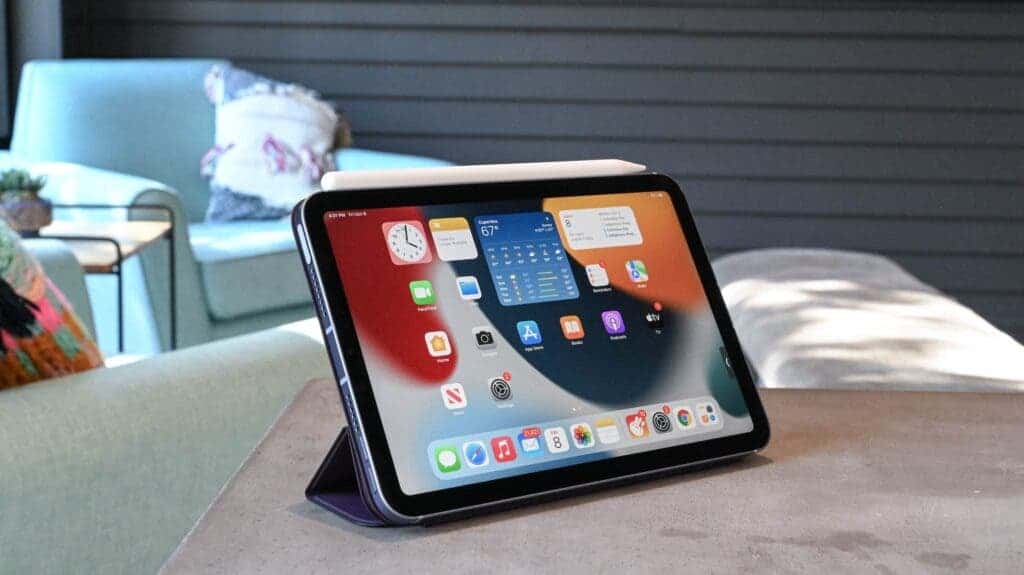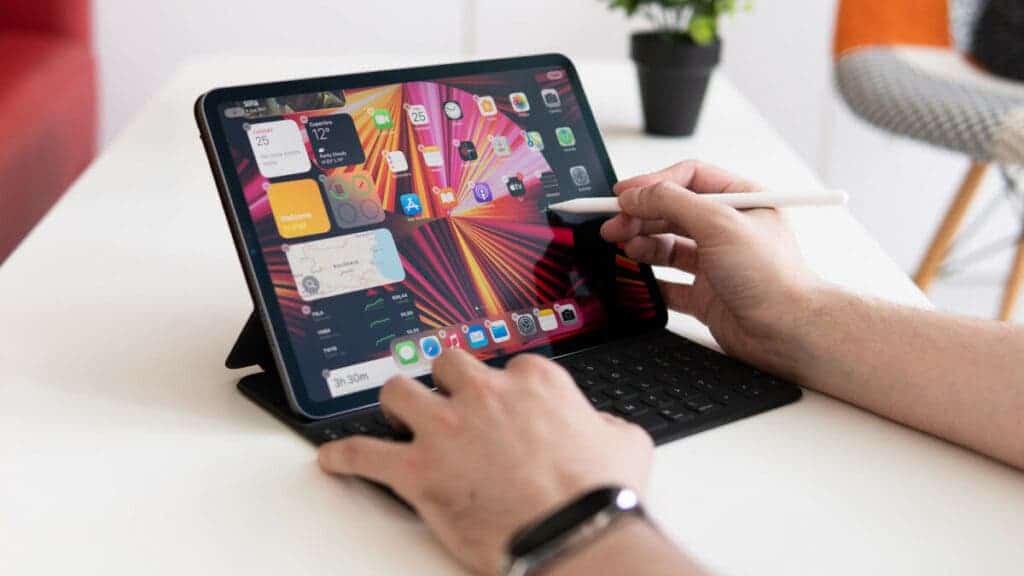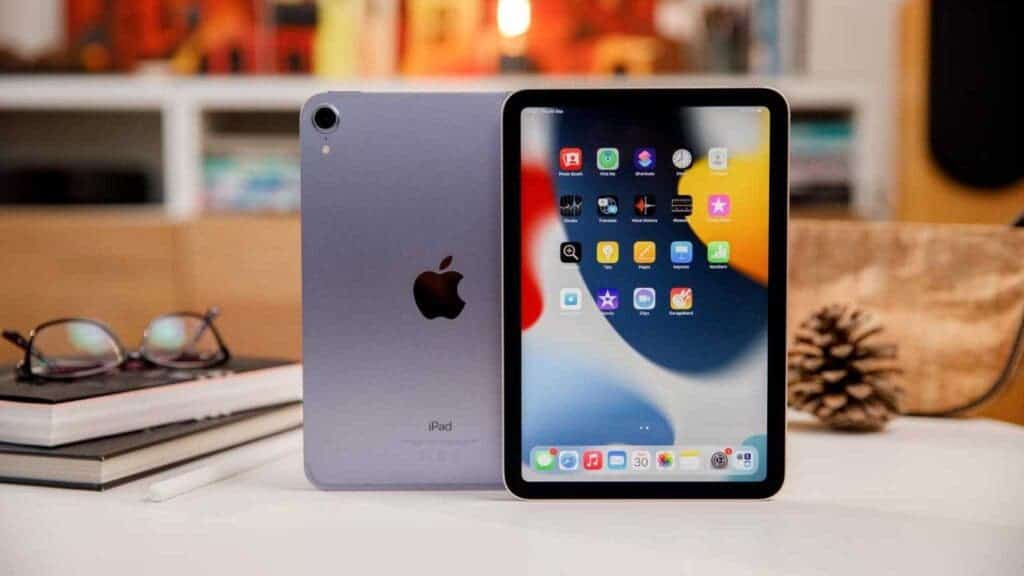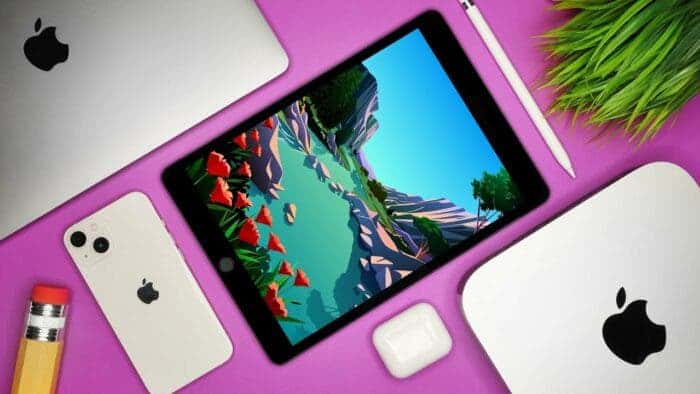Apple is continuously upgrading its iPhone and iPad lineup and the OLED display is now a trend for iPads. According to 9to5Mac, there are reports that Apple will use a new type of display for its OLED iPad screen. This suggests that the OLED iPad will feature an advanced new dual-layer design. In addition, there are also reports that Apple’s display suppliers Samsung and LG are both working on plans to produce new panels…

Talking about Apple’s display roadmap last year:
- IPS LCD with traditional backlight:. The company still make use of this display but only on older Macks and cheaper iPhones.
- IPS LCD with miniLED backlight:. Apple switched to this panel for the iPad Pro models, and the new MacBook Pro currently uses it as well. Allows for deeper blacks and brighter whites with amazing contrast differences.
- OLED:. Apple’s adoption of OLED displays has been gradual. The company first used an OLED display in the Apple Watch. Subsequently, the company introduced it to the iPhone starting with the iPhone X back in 2017. Apple has not yet used this panel in an iPad or MacBook. However, there are expectations that the company will have an OLED iPad sometime between 2023 and 2026.
- MicroLED:. Despite the similar name to miniLED, this is a completely different technology. It’s actually a more sophisticated OLED version. This display is brighter, saves power, and doesn’t suffer from burn-in. Apple’s interest in microLED dates back to at least 2014. Furthermore, there have been some signs of progress, the technology is still in the very early stages of development. Like OLED, it’s likely to appear on the Apple Watch first, followed by the iPhone, iPad, and Mac.
According to reports, the company will unveil at least one new iPad this year. There are also speculations that this device will likely arrive in an October event. However, these new models will likely not be the new OLED iPad models.
Early hybrid screen reports
A supply chain report last week claims that Apple will use a hybrid glass-polyamide film display on its first OLED iPad. The flexible polyamide film provides the flexibility needed by the small bezels of current iPhone models, as well as other advantages over glass. It’s easier to use, cheaper to produce, and lighter. It does run a small risk of “warping”, but it’s too small to be seen with the naked eye. The problem arises when extending it to the larger panel used on the iPad. Warpage will become apparent, so Apple is expected to opt for a hybrid panel that uses a mix of glass and film substrates.

Dual Layer OLED iPad Screen
Today’s report, also from The Elec, says the company will also use advanced new OLED technology that Samsung and LG are developing. According to available reports, the name of this technology is “dual-stacked tandem OLED,”. This technology uses two layers of pixels instead of one.
“Apple is expected to launch its first OLED iPad in 2024 with a two-layer tandem OLED panel […]
A single-layer OLED means that there is one red, green and blue emitting layer, while a two-layer tandem OLED means that there is one more layer.
Stacking two RGB emissive layers in series increases screen brightness while extending its lifespan, making the technology more suitable for tablets and PCs that will last longer than smartphones.”
This technology is compatible with hybrid panels. Furthermore, like miniLED, this technology will first appear on the iPad Pro model. However, this year’s new iPad Pros are expected to continue to use IPS LCD screens with miniLED backlighting.

OLED will be the main panel for future Metaverse devices – LG Display VP
According to media reports, the Metaverse, which became popular last year, has received extensive attention from the capital market and technology giants. Apple, Samsung, etc. are investing heavily in the Metaverse. There will be increasing demand for components such as panels.
In terms of panels for Metaverse products, Yang Joon-young, vice president of LG Display, recently said that the future will mainly be silicon-based OLED panels. Judging from reports, Yang Joon-young was at a Metaverse-related conference, saying that OLED-related technology has improved in recent years, and in micro-panels, it is leading the industry from silicon-based liquid crystal panels to silicon-based OLED panels. There are also reports that micro panels are panels of about 1 inch used for VR and AR devices. This type of panel replaces glass substrates with silicon bases and can achieve ultra-high definition without enlarging the size.
Yang Joon-young said at the meeting that compared with the current products with 1000-2000 pixels per inch, the panels required for Metaverse hardware devices will be more complex, and the next-generation VR devices will use 3000 pixels per inch or even higher.
For AR devices, Yang Joon-young believes that the advantage of silicon-based OLED panels is their small size, making them ideal panels for this type of device.

Metaverse? People don’t know what it stands for
One of the main problems with Metaverse is that very few consumers know precisely what the Metaverse is. According to a survey of 24,712 adults by market research firm Forrester, only 23 per cent of American adults are familiar with the metaverse. In Germany, a similar survey reveals that only 14% know what Metaverse is all about.
“I think the biggest challenge is … first of all, no one really knows what it is,” said Americus Reed, a professor of marketing at the Wharton School of the University of Pennsylvania. “It’s almost impossible for people to fully understand… the value in that. Why would I do this?”
To change that, Apple and Meta must first bring new devices to the enterprise market, build on that and continue to improve the comfort of the devices and pique the interest of ordinary consumers.





